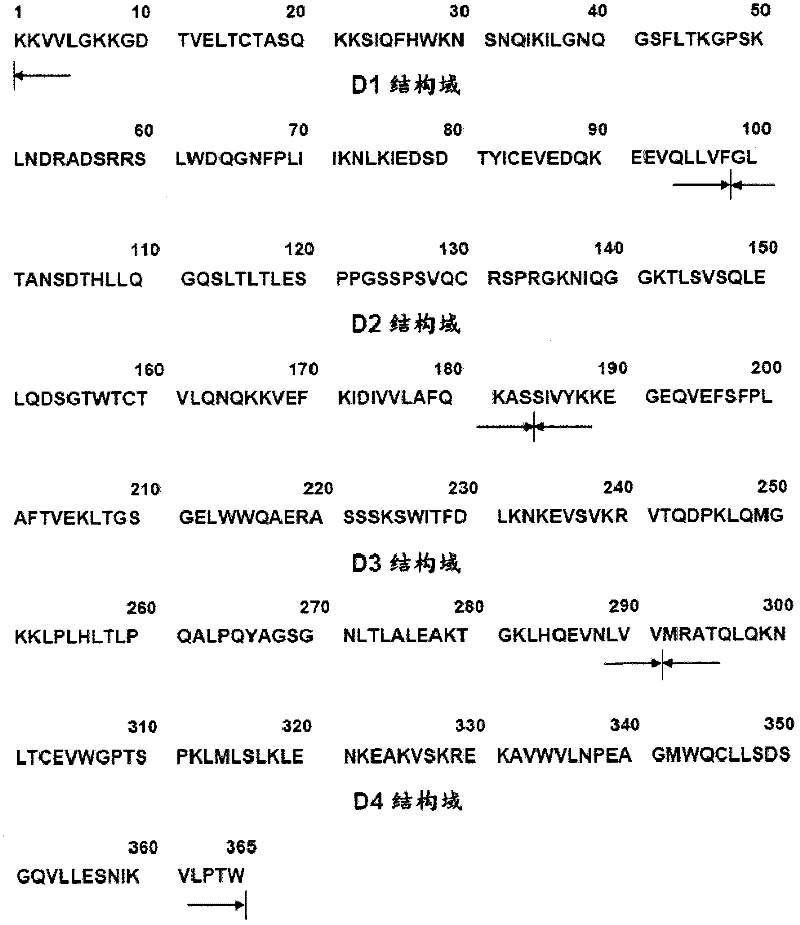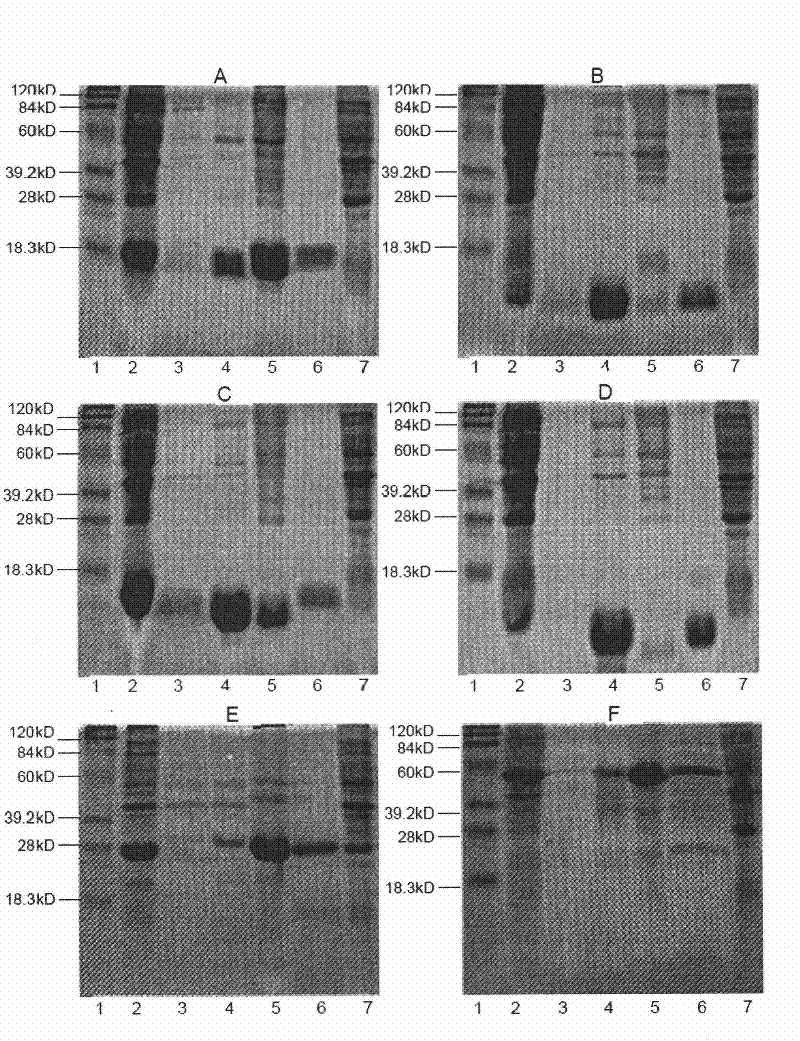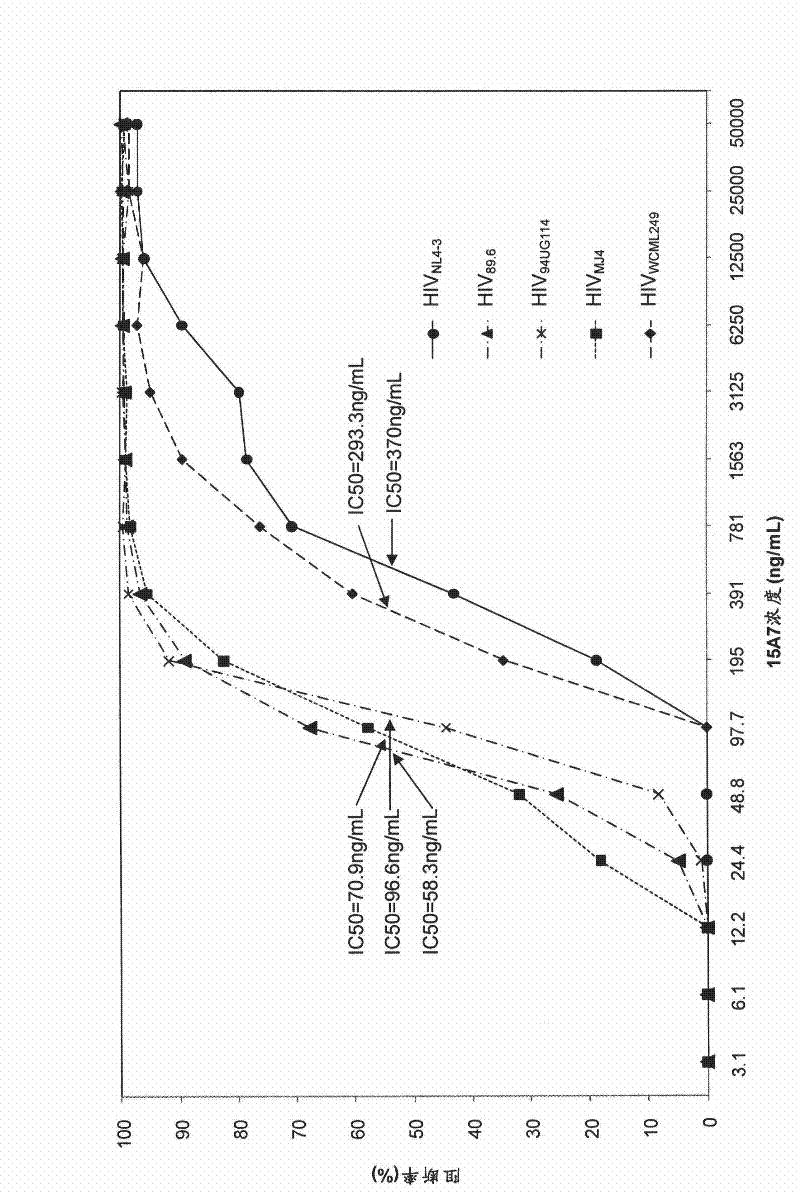CD4 protein-resistant monoclonal antibody and active fragment and application thereof
A monoclonal antibody, protein technology, applied in the field of prevention, immunotherapy and diagnosis, can solve problems such as interference
- Summary
- Abstract
- Description
- Claims
- Application Information
AI Technical Summary
Problems solved by technology
Method used
Image
Examples
Embodiment 1
[0190] Example 1. Can inhibit HIV infection CD4 + Preparation of Cellular Anti-CD4 Monoclonal Antibody
[0191] Mice: 6-week-old female BALB / c mice were provided by the Experimental Animal Center of the Academy of Life Sciences, Xiamen University.
[0192] Preparation of hybridomas: We use standard in vivo immunization methods and PEG fusion methods to obtain monoclonal antibodies. For detailed methods, see Ed Harlow et al., Antibodies A Laboratory Manual, Cold Spring Harbor Laboratory 1988. The brief process is as follows:
[0193] Mice immunization: The recombinant sCD4 antigen solution dissolved in PBS was mixed with an equal volume of complete Freund's adjuvant (CFA) to emulsify, and injected into the muscles of the limbs at multiple points. Each mouse was injected with 5 μg of the purified recombinant sCD4 antigen prepared in Example 2. (total volume 50 μL). The same dose of recombinant antigen solution plus incomplete Freund's adjuvant (IFA) was boosted 15 days and 29 ...
Embodiment 2
[0200] Example 2. Preparation of recombinant human CD4 fragment polypeptides for use as antigens
[0201] Preparation of human CD4 extracellular region fragment used as template: human CD4 cDNA in TZM-bl cell line (Cat. No. 8129 National Institutes of Health AIDS Research and Reference Reagent Program) was used as template, CD4(d1)F(5' -CGG CATATG AAG AAA GTG GTG CTG GGC-3') is the forward primer, CD4(d4)R (5'-GCGAATTCTTACCATGTGGGCAGAACCTT-3') is the reverse primer, and the PCR thermocycler (Biometra T3) is carried out according to the following conditions PCR reaction: 94°C for 10 minutes; followed by 25 cycles of 94°C for 30 seconds, 56°C for 30 seconds, 72°C for 1 minute, and finally a 72°C extension for 10 minutes. A specific DNA fragment of about 1.1 kb in size is obtained and used as a template DNA fragment for preparing each truncated recombinant human CD4 polypeptide. The PCR product obtained above was ligated with a commercially available pMD 18-T vector (produced by...
Embodiment 3
[0215] Example 3. Monoclonal antibody blocking HIV infection TZM-bl cell activity verification
[0216] Five full-gene experimental strains of HIV belonging to B, C, D, D / C subtypes (HIV NL4-3 , HIV 89.6 , HIV 94UG114 , HIV MJ4 , HIV WCML249 ), determined by cell neutralization assay that mAbs 15A7 and 14G7 were able to infect CD4 with the above-mentioned viruses + Cell blocking / neutralizing effect. TZM-bl cells were 1.5 × 10 4 Cells / well were seeded in 96-well cell culture plates and used for detection after 12 hours. as per image 3The dilution concentrations listed in the coordinates were used to dilute the monoclonal antibodies 15A7 and 14G7. Add 100 μL of antibody dilution and 50 μL of each HIV virus suspension (diluted to 100TCID50) in each well of a 96-well U-bottom plate, and incubate at 37°C for 1 hour. 150 μL of the mixture was added to the cultured TZM-bl cells on a 96-well cell culture plate, and after culturing at 37° C. for 48 hours, the color was develop...
PUM
| Property | Measurement | Unit |
|---|---|---|
| molecular weight | aaaaa | aaaaa |
Abstract
Description
Claims
Application Information
 Login to View More
Login to View More - R&D
- Intellectual Property
- Life Sciences
- Materials
- Tech Scout
- Unparalleled Data Quality
- Higher Quality Content
- 60% Fewer Hallucinations
Browse by: Latest US Patents, China's latest patents, Technical Efficacy Thesaurus, Application Domain, Technology Topic, Popular Technical Reports.
© 2025 PatSnap. All rights reserved.Legal|Privacy policy|Modern Slavery Act Transparency Statement|Sitemap|About US| Contact US: help@patsnap.com



